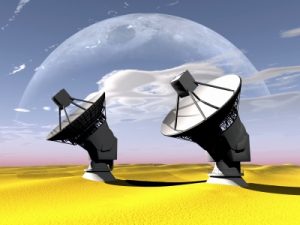
Image Courtesy of njaj at FreeDigitalPhotos.net
Anybody out there?
At ConCarolinas 2016 I had the pleasure of being on five science panels. I did a TON of research to make certain I was ready to roll on the panels and I think everyone, audience and panelists, had a really good time. For “50 Years of SEIT, Where is Everyone?” I shared a panel with Stephen Euinn Cobb, Dr. Ben Davis, and DL Leonine. (SEIT – Search for Extra-terrestrial Intelligent Life)
The blurb for the panel read
“A formal search for extraterrestrial intelligence has been in place for 50 years without meaningful result. Are we alone in the universe? And if we aren’t alone, then why haven’t we heard from anyone else?”
After finding over 1,000 new planets in 2016 alone and having proof of 21 earth-ish size planets in the life zone as we understand it, the questions are legitimate. [(NASA’S Kepler]
What the panelists decided is we are looking in the wrong places for the last 50 years. When we initially started looking radio waves were the BOMB. Everything ran to radio and we knew, WE KNEW, any advance civilization would have an ever-increasing radio footprint spreading out from its home planet. Communication between the native planet and space stations would be by radio. Tons and tons of radio waves would be going out into space randomly once a civilization reached its industrial age and so long as the civilization continued to exist this situation would continue.
The assumption has proven false.
Less than 50 years since we started looking and Earth’s the use of powerful radio waves peaked, then started falling. We have gone wireless, which does mean radio waves – but we have dropped the strength drastically. Most waves don’t make it 100 miles let alone out of the atmosphere. All they have to do is get to the nearest cell tower and go underground. We narrow-focus everything sent to space to save energy, so little leaks beyond Earth’s slowly quieting electronic footprint.
Also in the mix, if we use Earthlings as an example of what might be happening to other sentients, is how far radio waves travel before disappearing in the background noise of space. Which is “not far”. Twenty light years out, and unless the neighbors (only 110 stars in 53 systems, don’t know how many planets, yet) directed a focused radio at us, we would hear nothing. [How far] [Nearest Stars]
I know I published about LIGO in June where we hear the merging of black holes at the edge of the universe from over a billion years ago, but that phenomenon was a 7 millisecond long and used up (converted from mass direct to energy) the equivalent mass of three suns. Somehow I don’t see anyone doing this energy output on a sustained basis. We got lucky because we were listening for the gravity waves during a time when the results of the activity crossed our sphere in space. We started listening in 2002 (14 years ago). [Gravitational Waves]
Maybe we will get lucky again. This time with SEIT. Of course to have the luck work the following will need to happen:
- We LISTEN.
- We listen in a variety of mediums beyond radio waves.
- We narrow the search to where we think life might be. (This does mean life needs to match our expectations, but the sky is HUGE. We need limits to create a cost-effective search.)
- The civilization needs to have sent out the message at a particular time in the past and it needs to arrive at our point in space, both physically and temporarily since Earth moves through space, while we are listening.
I think we will eventually hear something. Maybe not this century and 150 years is an exhausting long time to listen for a maybe chance of a whisper. Is the search worth it?
Depends on what else we find looking for extra-terrestrial intellect life. So far we discovered pulsars and gathered a ton of data we are now using to look for planets. Scientists don’t waste data.
I think the most important aspect of SEIT is hope. Hope we might have friends someday when we finish outgrowing our home planet.
Bibliography
“Gravitational Waves Detected 100 Years After Einstein’s Prediction.” 2016 February 11. Downloaded 6/28/2016 from https://www.ligo.caltech.edu/news/ligo20160211.